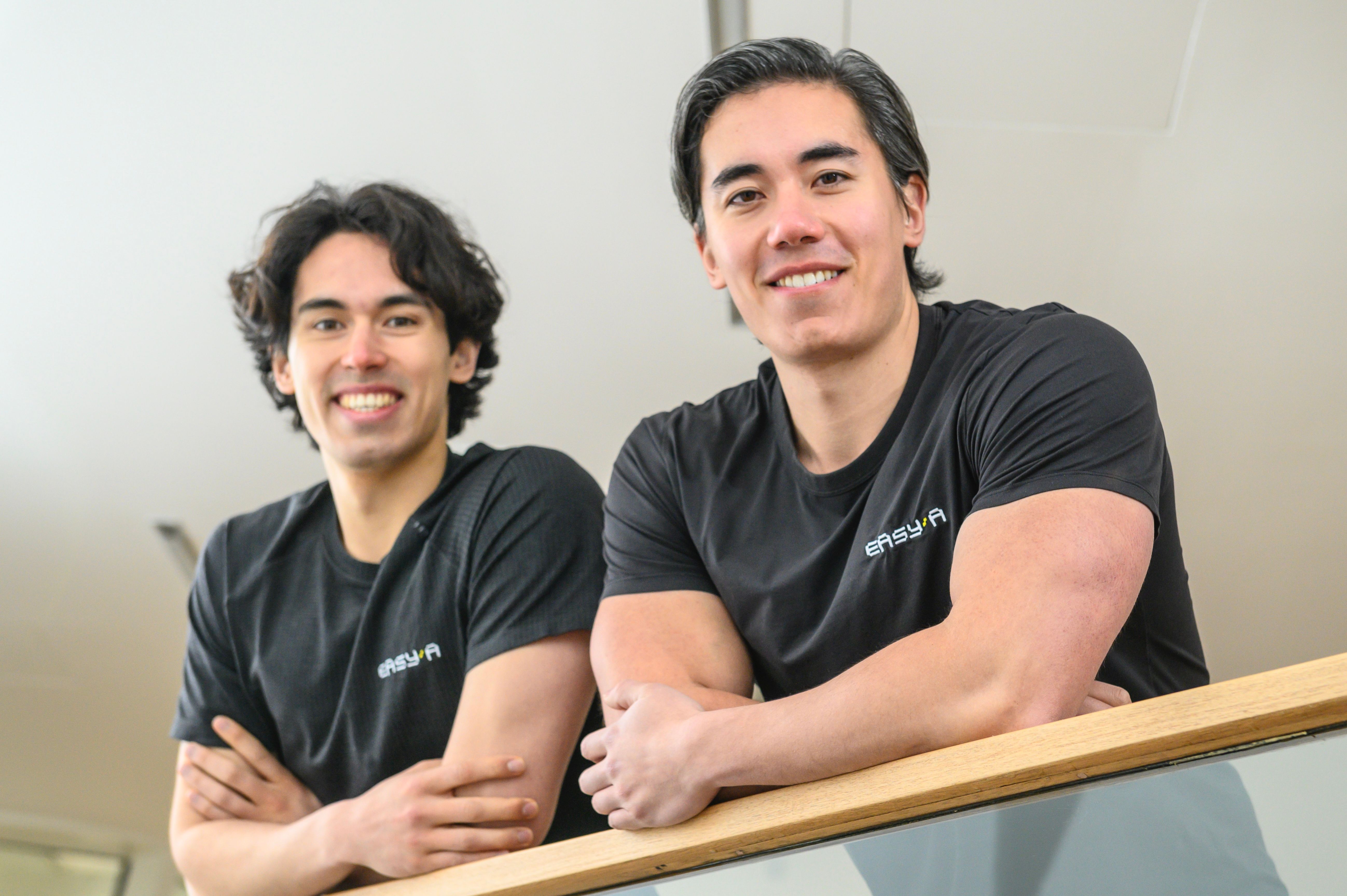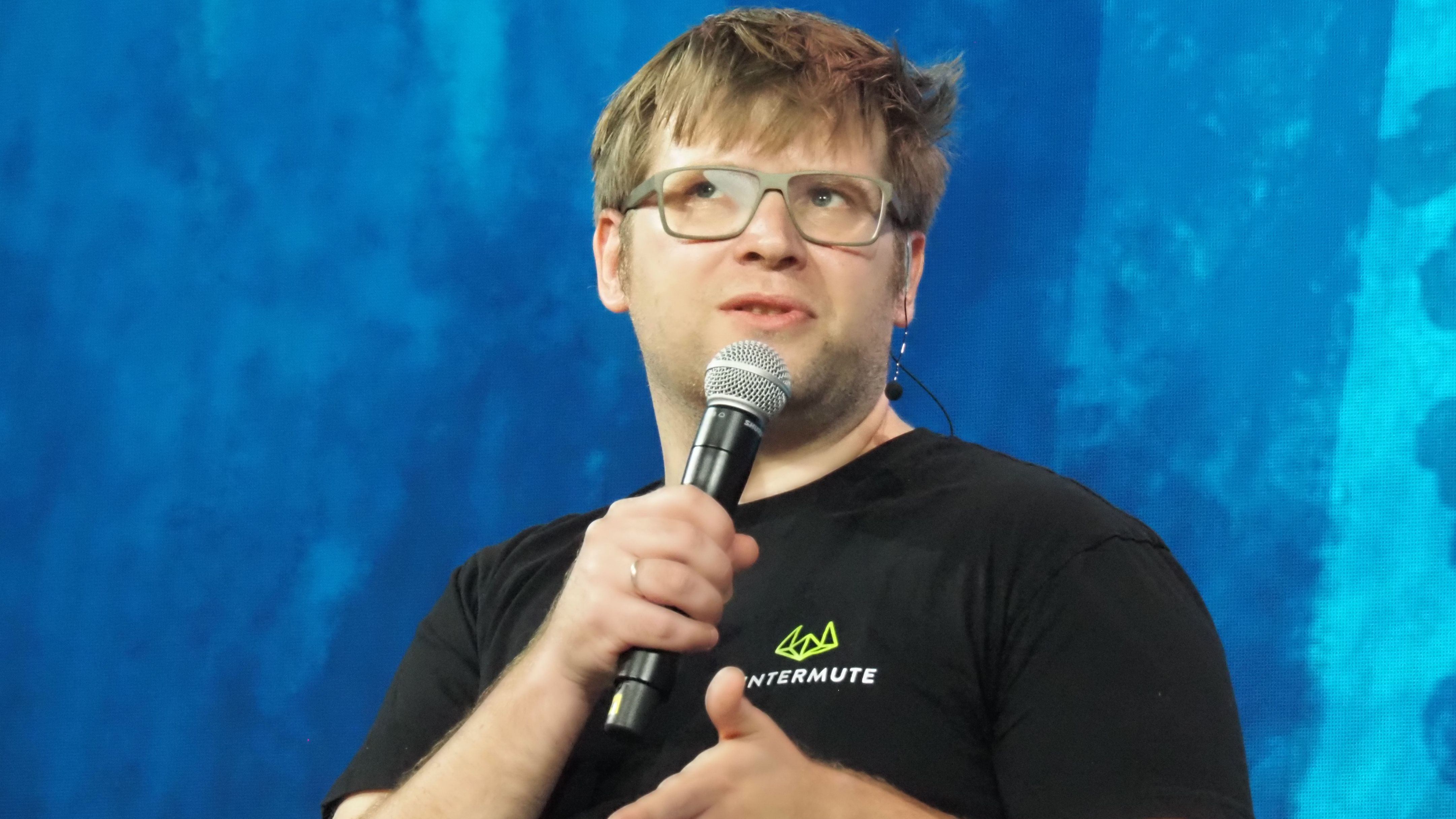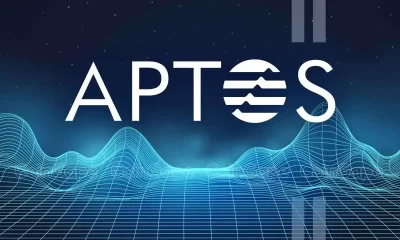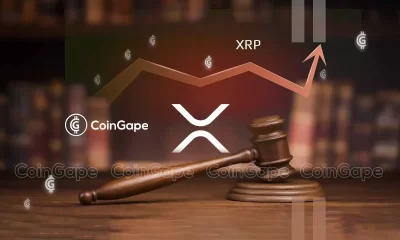Asia
EasyA Wants to Attract More Than Just ‘Bounty Hunters’ to Its Hackathons
Published
2 months agoon
By
admin
Many participants in industry hackathons are just looking to make some quick prize money and move on to the next contest — Dominic Kwok calls them “bounty hunters.”
But EasyA, the start-up for developers that he and his brother Phil started four years ago, is looking for a different type of competitor — those who are looking to build companies that can have a significant impact on Web3. It’s an approach that has proved fruitful, with the companies coming out of EasyA’s app community and monthly in-person hackathons having raised money at a collective valuation of over $3 billion from top VC firms such as a16z crypto and CMT Digital. And EasyA’s mobile app, which helps developers easily start building their own Web3 projects, has over a million users worldwide.
At the first EasyA Consensus hackathon in Austin last May, more than 700 participants launched 100 different crypto projects, and the Kwoks are expecting similar numbers for upcoming events at Consensus Hong Kong and Consensus Toronto (if you’d like to apply for the EasyA Hackathon at Consensus Hong Kong 2025, please go here).
Here they discuss why their unique approach to hackathons, how they expect Consensus Hong Kong will differ from hackathons in other parts of the world and how Donald Trump’s election could affect the types of projects crypto developers focus on.
This series is brought to you by Consensus Hong Kong. Come and experience the most influential event in Web3 and Digital Assets, Feb.18-20. Register today and save 15% with the code CoinDesk15.
This interview has been condensed and lightly edited for clarity.
How did EasyA get started?
Dominic: So we originally launched EasyA about four years ago as the go to place for anyone to learn about the world’s best blockchains. Anyone can use the EasyA app on iOS and Android to learn about the top Layer Ones out there, like Solana, Polkadot, Stellar and Ripple’s XRP Ledger. And people can learn how to not only develop, but also launch their own projects. We also host a lot of big hackathons in person all around the world, in which hundreds of people come in person and launch projects on our blockchain partners. And the goal is to get these people not just launching, but then also founding and building startups that go on to get funded by the ecosystem and VCs.
How do you approach hackathons differently than other companies that run these?
Dominic: Two things. The first is that EasyA is very focused on founders who want to start their own companies, versus hackathon “bounty hunters.” We really want to make sure that our participants actually stick around and build their projects because that’s where we see the future of Web3 really being built from. And the second thing is most of our hackathons are single chain, so participants focus on one piece of tech and they actually launch on that one, as opposed to focusing on 50 different chains. We want to put people in front of the best ecosystems that have the most support for developers.
How do you think the Consensus hackathon in Hong Kong will be different from those you hold in other parts of the world?
Dominic: The scale is just going to be super big. We’ve already had a record number of people apply for the seats in the arena. We’ll obviously have people from Hong Kong, but then also from other Asian countries like India, Indonesia, Vietnam, Malaysia, Singapore and China. And we’re also seeing huge numbers of people from the West want to come. For many of those people, it’ll be the first time they’ve actually been to Asia.
Do you expect there to be differences in the types of projects that developers in Asia pursue, as opposed to those in other parts of the world?
Phil: There’s a geographical element and then there’s also a thematic one. A huge theme that we’ve seen come up over the past couple of weeks is AI x Web3, and a lot of developers are excited about that intersection. We’ve also seen protocols like virtuals really kick off and become very successful, so I think we’ll see a lot of that. Geographically, in Asia there are obviously so many different currencies, and we’re seeing that developers there actually understand those cross-border use cases a lot better. If you’re a U.S.-based developer, you don’t necessarily see those friction points a ton. So I think that we’re going to see a lot more of the cross border payment solutions start to flesh themselves out.
How do you think Donald Trump’s presidency will affect the kinds of projects you see at your hackathons?
Phil: Obviously DeFi has always been one of the biggest areas of product market fit in crypto — arguably one of the few that actually has that fit. But so far because of, frankly, how scared a lot of developers were in the States, a lot of people just weren’t building nor launching in the U.S. And so you’d often go on to a decentralized app and it’ll say “Oh, you’re in the States, you can’t use this.” So that’s a very visible area where we’re going to start seeing changes. Another area where you can’t participate if you’re from the U.S. is airdrops. So if you are an end user, you couldn’t really access a lot of crypto. And if you wanted to target this demographic, which of course is the wealthiest in the world, you couldn’t. So I think DeFi is really going to explode, especially in the States.
Both of you are also speakers at Consensus Hong Kong. What will you be talking about?
Dominic: Our keynote will be about why it’s so hard right now for Web3 ecosystems to attract developers now. And we’re going to be giving some of our tips on how they can attract developers more easily and at a bigger scale. Right now, Web3 firms are competing over the same developers, and the growth of Web3 devs has pretty much stagnated. And obviously at EasyA, our whole mission is actually to bring way more developers into the space. That starts with making it easy. But we’re also making several big tech upgrades that will allow developers to build much more easily on-chain. And we’re going to be revealing those on stage.
Source link
You may like
AI
Wintermute CEO Evgeny Gaevoy Discusses the Future of Crypto Trading
Published
2 months agoon
February 2, 2025By
admin
Evgeny Gaevoy began his career in traditional finance, specializing in market making and prop trading. But by 2016, seeing the inefficiencies of legacy financial systems and the potential for disintermediation, Gaevoy realized there was an opportunity to create something entirely new and better.
With experience building up foreign exchange firm Optiver’s European ETF business — one of the largest in the EU — he decided to launch an algorithmic trading firm designed for the digital asset era. Since 2017, Wintermute has since grown into one of the largest algorithmic trading and liquidity providers in crypto, processing over $5 billion in daily trading volume and providing deep liquidity to 50+ trading venues across centralized and decentralized exchanges.
This series is brought to you by Consensus Hong Kong. Come and experience the most influential event in Web3 and Digital Assets, Feb.18-20. Register today and save 15% with the code CoinDesk15.
Here, Gaevoy, who will be speaking at Consensus Hong Kong, discusses how Asian crypto markets differ from those in the West, how he predicts AI will be used in trading and market making and how Wintermute is responding to the growing fragmentation of liquidity across multiple blockchains.
This interview has been condensed and lightly edited for clarity.
What led you to start Wintermute?
I started looking into the blockchain around 2016, which is relatively late compared to some early adopters. At the time, I was in traditional finance and what really interested me was disintermediation — cutting out the inefficiencies of custodians and prime brokers, which were painfully slow in how they operated. Blockchain seemed like a great way to disrupt that.
But back then, it all felt very theoretical. It wasn’t until 2017 that I really got into crypto. I quit my job, started looking around, and bought a small amount of bitcoin on Coinbase — just to test it out. Then it doubled in price in a week or two, and I barely paid attention because the volatility was just so insane compared to what I was used to in TradFi.
In TradFi market making, there are maybe 10 days a year when things get really exciting — when markets move 3-4%, and that’s considered a big deal. But in crypto, that kind of movement happens all the time. So I figured, I know prop trading, I know market making and I like building things from scratch — so why not build a market-making business in crypto? That’s how Wintermute came to be.
You’ve been actively engaged in both Western and Asian markets — what are the biggest differences you’ve observed between the two?
Regulation-wise, everything is still primarily driven by the U.S. Even in Asia, most companies watch what the U.S. is doing rather than setting their own independent course.
When it comes to OTC and institutional trading, China is the biggest missing piece. Chinese institutions and corporations are still not allowed to touch crypto, and until the Chinese Communist Party changes its stance, we won’t see proper institutional flows from there.
What key opportunities are you seeing coming out of Asia right now?
The most interesting development right now is how certain countries are opening up to crypto in meaningful ways. Japan is becoming increasingly attractive due to its improved tax policies for crypto. By reducing tax burdens on crypto holdings, the country is making it easier for both businesses and individuals to participate in the market without excessive financial penalties. This is a significant move that could drive liquidity and institutional involvement.
South Korea is another exciting case, mainly because of its massive retail market. However, a major limitation is that foreign market makers are still restricted from integrating with local exchanges. If regulators were to allow external liquidity providers to participate, it could unlock a tremendous amount of liquidity. Right now, Korean exchanges remain fairly isolated, which is why we still see phenomena like the Kimchi premium — a direct result of structural barriers preventing global liquidity from flowing freely into the market.
Hong Kong, on the other hand, plays a unique role as a pilot program for China. While China still officially bans crypto, Hong Kong is establishing regulated markets and institutional frameworks that could serve as a testing ground for how China might engage with crypto in the future. This makes Hong Kong an important region to watch, especially in terms of institutional adoption.
The key thing to watch is how these markets evolve, because they each offer different entry points into Asia’s crypto adoption cycle — Japan is attracting institutions with tax incentives, Korea is a retail-heavy market with potential liquidity unlocks, and Hong Kong is a regulatory experiment that could have broader implications for China.
What have been some of the lesser-known or unexpected catalysts driving crypto adoption and liquidity in Asia?
The biggest surprise for me is that a lot of the narratives we see on Crypto Twitter and from VCs don’t reflect what’s actually happening on the ground.
A great example is Tron and Tether. In Asia and Latin America, USDT on Tron is the most widely used crypto asset for payments, especially for the unbanked and those looking to escape currency devaluation. But in the West, nobody talks about it. There are also a lot of projects and DeFi protocols that get ignored in the Western echo chamber but are doing really well in Asia. That’s why I think it’s crucial to keep a pulse on what’s happening in Asia, rather than just relying on Western narratives.
Do you think AI will ever autonomously run an entire market-making operation?
AI is already widely used in trading, and it has been for quite some time. Machine learning is nothing new — firms have been using it in prop trading for years. What’s different now is just how much more advanced AI models are getting, and how much raw computing power is being thrown at the problem.
Take XTX for example, (another algorithmic trading firm) — they have an insane amount of GPUs dedicated to machine learning. They’re even building huge data centers in Finland just to run their AI models. It’s not something brand new in trading, but the scale at which it’s being deployed is increasing rapidly.
Will AI completely replace human traders? I don’t think so — at least not in the next 5-10 years. The biggest limiting factor is how much you can actually automate.
Right now, you have different styles of market-making firms — some heavily rely on AI, while others still have a lot of human input. Wintermute falls somewhere in the middle. We use AI where it makes sense, but there’s still a lot of human decision-making involved, especially when it comes to market dynamics that AI doesn’t fully understand yet.
The real challenge is adapting AI to a market like crypto, which is still highly unpredictable and lacks the structured data sets that traditional finance firms have access to. AI is great at pattern recognition, but it still struggles with black swan events and highly volatile markets. Until AI reaches a level where it can fully adapt to unexpected market shifts, humans will still play an important role.
How does Wintermute approach the challenge of liquidity becoming increasingly fragmented across different blockchains?
At Wintermute, our core strategy is to facilitate and promote as much diversity as possible when it comes to blockchains, centralized exchanges and decentralized exchanges. We don’t see fragmentation as a bad thing — it actually creates more opportunities for us.
Right now, we’re connected to all major centralized exchanges, a huge range of OTC counterparties and dozens of DeFi ecosystems. This diversity is our competitive advantage. Instead of waiting for the market to converge, we embrace the fragmentation and position ourselves to be everywhere liquidity exists.
Could things become more centralized over time? Maybe, but I don’t think so, at least not in the way TradFi works. In traditional finance, you have CME for derivatives, a few dominant stock exchanges and a relatively small number of key players.
Crypto is different. It’s inherently decentralized, and I think it will stay that way. There will always be new blockchains, new trading venues and new liquidity pools. Instead of everything consolidating into a few big players, I think we’ll see a continued expansion of ecosystems — and firms like Wintermute need to be agile enough to operate in all of them.
What are you most excited to discuss on stage at Consensus Hong Kong?
One of the things I would like to talk about is market structure and the role of market makers in crypto. There are so many misconceptions about what we do. For example, if you go on Crypto Twitter, you’ll see people blaming market makers for causing price crashes, which is just not how it works. There’s this huge misunderstanding about what market makers actually do, how we operate, and how we provide liquidity. I’d like to dispel some of those myths, explain how the market really functions and maybe even challenge some of the false narratives that are out there.
Source link
Asia
Figment CEO Lorien Gabriel’s Big Bet on Staking Has Paid Off
Published
2 months agoon
January 28, 2025By
admin
Lorien Gabel has spent decades building internet infrastructure companies, from ISPs to cloud security firms. In 2018, recognizing the transformative potential of proof-of-stake networks, he co-founded Figment, which has since become one of the world’s largest independent staking providers, offering technology and services that enable users to stake their tokens without having to use a centralized exchange or custodian.
Today, the company manages $15 billion in assets and serves over 500 institutional clients.
This series is brought to you by Consensus Hong Kong. Come and experience the most influential event in Web3 and Digital Assets, Feb.18-20. Register today and save 15% with the code CoinDesk15.
Here, Gabriel, who will be a speaker at Consensus Hong Kong, discusses Figment’s expansion into Asia, bitcoin staking experiments and his company’s careful process for deciding which new crypto networks to support.
This interview has been condensed and lightly edited for clarity.
What led you to start Figment?
This is the fourth company my co-founders and I have built together over three decades. Our previous ventures were all in internet infrastructure. When we started exploring blockchain in 2018, staking was barely a thing — Tezos had launched, and Ethereum was still only discussing it. But we saw a natural alignment between our expertise in network security, cloud infrastructure and scaling B2B solutions and what proof-of-stake (PoS) could become. If PoS gained traction, we believed our experience in building secure, institutional-grade networks would be invaluable.
We originally planned to start a fund, and now we do have a VC fund. But the fund didn’t come first — the staking infrastructure company did, and then we launched Figment Capital. We basically took a flyer on proof-of-stake, believing it had some advantages over proof-of-work, and we were lucky enough that it actually worked and took off.
How large is Figment now?
We currently manage $15 billion in staking assets and serve 500 institutional clients. While employee count isn’t always a meaningful metric, we have about 130 employees and expect to reach 150 by year-end. Asia is our next big expansion focus. We opened our Singapore office last year, and we’re adding Japan, Hong Kong and other key markets. While North America remains our base, Asia’s demand for staking services is growing rapidly.
What challenges do you see to Asia’s adoption of staking compared to other regions?
First, Asia isn’t one market — it’s a collection of vastly different economies and regulatory landscapes. Japan, Indonesia and Korea, for example, have distinct business cultures, adoption levels and regulatory frameworks. We’ve always been compliance-focused, working only with institutional clients rather than retail users. But in Asia, compliance varies widely by country. Unlike the U.S., where you primarily navigate SEC and CFTC rules, each Asian market has its own regulators and policies.
Also, Western companies often fail when expanding into Asia by not understanding local hiring, scaling strategies or customer behavior. I was born in Kuala Lumpur, and I’ve seen North American firms overinvest too quickly or misread market needs. That’s why we started small in Singapore with three people, so we could learn before scaling.
Education is another challenge. In many Asian markets, staking is not well-defined and is sometimes misconstrued as DeFi lending. We spend a lot of time at conferences, client meetings and media interviews explaining what staking is and why institutions should consider it over riskier yield-generating alternatives.
What has been the biggest challenge in scaling your business, and how did you overcome it?
The hardest part of any startup is the “zero to one” phase — figuring out whether an idea will work, what customers need and how the business model will evolve.
Early on, we ran multiple experiments — we had a remote procedure call (RPC) infrastructure business, a developer knowledge portal and different revenue streams. But once we found a strong product-market fit in staking, we shut down the rest and focused entirely on scaling one core offering.
The second major challenge is crypto’s volatility. Our business operates like a mix between a data center company, a fund and a software business, but with variable pricing in dozens of volatile digital assets. That complicates planning. I joke that my unofficial title is “Chief Stoic” — I don’t get too euphoric when markets are booming, and I don’t panic when things go south. Whether it’s FTX’s collapse or bitcoin hitting $100,000, we focus on long-term execution.
Are you seeing increased institutional interest in staking in Asia?
Yes, institutional adoption is accelerating, particularly from banks and telecoms. We’ve had institutional equity investors from Asia for a while — big names like Monex and B Capital—but over the last year, we’ve seen more traditional financial institutions actively entering staking. Each market has its own dominant exchanges and custodians, and we often partner with them rather than dealing with end users. As more banks explore staking, we expect adoption to snowball — similar to how institutions in the U.S. started cautiously investing in staking before scaling operations.
How do you decide which tokens to support for staking? Do Asian markets influence this?
We have an evaluation framework that we’ve refined over the past six years. Since we can only support a limited number of new tokens each year, we have to be selective — last year, we added support for 12 or 13, which is quite a lot given the complexity of each integration. Right now, we’re supporting around 40 networks, but every new addition requires careful analysis.
The process starts with the basics: is this a real project or a scam? Does it have a strong thesis and a team capable of executing it? In many ways, it mirrors a VC framework. From there, we dig deeper, speaking with the foundation and founders, assessing the level of custody support available — since that’s crucial for institutional adoption — and evaluating the broader ecosystem.
At some point, though, when you have 20 strong candidates but can only support 10, you have to make a bet. Sometimes we get it right, sometimes we don’t. Over the years, we’ve seen enough network launches to develop a strong intuition about what works and what doesn’t. We try to offer guidance to projects where we can, though ultimately, it’s up to them whether they take our input.
Customer demand is another factor in our decision-making, and the Asian market is an important part of this. Occasionally, a major institutional client will request support for a project we might not have otherwise considered — or even heard of — so we conduct an expedited evaluation. In some cases, we’ve had to tell clients no, either because we don’t see the project as legitimate or we suspect it might be a scam. Those are tough conversations, but they’re necessary. Ultimately, we also look at how many of our clients are likely to hold or stake a given token, which plays into our final decision.
With many Asian investors seeking high-yield opportunities, how does Figment ensure competitive returns while staying secure and reliable?
Staking is not the highest-yield activity in crypto, but it’s the safest way to earn yield without counterparty risk. We focus on providing the highest risk-adjusted staking rewards. While some providers chase higher returns by cutting corners (e.g., ignoring OFAC compliance or MEV risks), our clients — mainly institutions — prioritize security and compliance.
In crypto, staking is the equivalent of a 10-year Treasury bond — it’s the stable, reliable option compared to high-risk DeFi strategies. Some investors prefer liquidity pooling or lending for higher yields, but institutions typically choose staking for its security.
Are there any staking-related trends or innovations in Asia that excite you?
Some of the most exciting trends in staking right now include liquid staking and re-staking, with EigenLayer leading the charge globally in these areas and having a strong presence in Asia. Bitcoin staking is another area of interest, with projects like Babylon exploring its potential, though demand remains uncertain. Additionally, we’re seeing new chains with significant Asian influence, such as BeraChain, which is rapidly growing its user base in the region. We’re actively supporting BTC staking while closely monitoring new staking models emerging from Asia.
Source link

New SEC Chair Paul Atkins Holds $6,000,000 in Crypto-Related Investments – Here’s His Portfolio: Report

We’ve Turned A Generation Of Bitcoiners Into Digital Goldbugs

Solana DEX Raydium’s Pump.fun Alternative Is Going Live ‘Within a Week’

Google Cloud joins Injective as validator, expands Web3 tools

U.S. House Stablecoin Bill Poised to Go Public, Lawmaker Atop Crypto Panel Says

South Korea Urges Google To Block 17 Unregistered Crypto Exchanges

Bitcoin Rally To $95K? Market Greed Suggests It’s Possible

Polymarket faces scrutiny over $7M Ukraine mineral deal bet

Morgan Stanley Warns of Short-Lived Stock Market Rally, Says Equities To Print ‘Durable’ Low Later in the Year

Stablecoins Are The CBDCs

Ethereum Volatility Set to Surge in April as Derive Flags Bearish Sentiment Shift

Crusoe Energy sells Bitcoin mining arm to NYDIG, turns focus to AI

What Next For XRP, DOGE as Bitcoin Price Action Shows Bearish Double Top Formation

Why Is Pi Coin Price Down Another 12% Today?

XRP Price Struggles at Key Resistance—Can Bulls Force a Breakout?

Arthur Hayes, Murad’s Prediction For Meme Coins, AI & DeFi Coins For 2025

Expert Sees Bitcoin Dipping To $50K While Bullish Signs Persist

Aptos Leverages Chainlink To Enhance Scalability and Data Access

Bitcoin Could Rally to $80,000 on the Eve of US Elections

Sonic Now ‘Golden Standard’ of Layer-2s After Scaling Transactions to 16,000+ per Second, Says Andre Cronje

Institutional Investors Go All In on Crypto as 57% Plan to Boost Allocations as Bull Run Heats Up, Sygnum Survey Reveals

Crypto’s Big Trump Gamble Is Risky

Ripple-SEC Case Ends, But These 3 Rivals Could Jump 500x

Has The Bitcoin Price Already Peaked?

A16z-backed Espresso announces mainnet launch of core product

Xmas Altcoin Rally Insights by BNM Agent I

Blockchain groups challenge new broker reporting rule

Trump’s Coin Is About As Revolutionary As OneCoin

The Future of Bitcoin: Scaling, Institutional Adoption, and Strategic Reserves with Rich Rines

Is $200,000 a Realistic Bitcoin Price Target for This Cycle?
Trending

 24/7 Cryptocurrency News5 months ago
24/7 Cryptocurrency News5 months agoArthur Hayes, Murad’s Prediction For Meme Coins, AI & DeFi Coins For 2025

 Bitcoin2 months ago
Bitcoin2 months agoExpert Sees Bitcoin Dipping To $50K While Bullish Signs Persist

 24/7 Cryptocurrency News3 months ago
24/7 Cryptocurrency News3 months agoAptos Leverages Chainlink To Enhance Scalability and Data Access

 Bitcoin5 months ago
Bitcoin5 months agoBitcoin Could Rally to $80,000 on the Eve of US Elections

 Altcoins2 months ago
Altcoins2 months agoSonic Now ‘Golden Standard’ of Layer-2s After Scaling Transactions to 16,000+ per Second, Says Andre Cronje

 Bitcoin4 months ago
Bitcoin4 months agoInstitutional Investors Go All In on Crypto as 57% Plan to Boost Allocations as Bull Run Heats Up, Sygnum Survey Reveals

 Opinion5 months ago
Opinion5 months agoCrypto’s Big Trump Gamble Is Risky

 Price analysis5 months ago
Price analysis5 months agoRipple-SEC Case Ends, But These 3 Rivals Could Jump 500x


